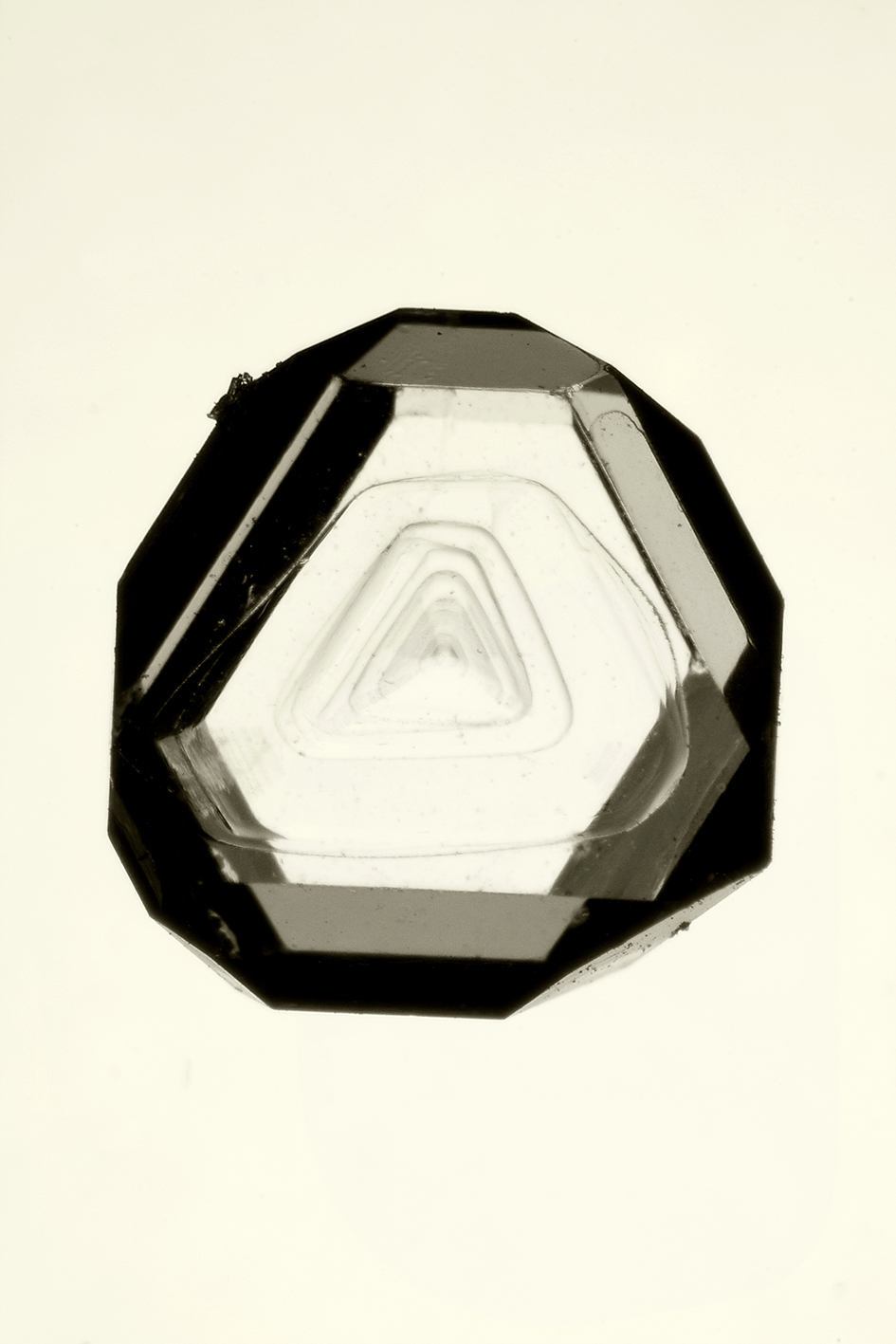A formação de um CRISTAL acontece em condições específicas de temperatura e saturação, e, às vezes, pressão. Minha investigação acerca do processo de transformação começa no momento inicial da transformação de um líquido em um sólido – o surgimento de “sementes” de cristais, chamado de nucleação –, seguido do processo de estruturação das camadas, em que uma solução, o licor-mãe, alimenta o crescimento.
Esse processo começou a ganhar relevância estética em meus trabalhos quando, no segundo semestre de 2006, trabalhei em colaboração com cientistas da University College of London. A partir de um ponto de vista teórico, o trabalho também envolveu a compreensão da segunda lei da termodinâmica, relacionada à entropia, no desenvolvimento da formação de cristais e de sais inorgânicos. O escopo da investigação então foi orientado para a energia contida, organizada, transparente e silenciosa.
Em meus trabalhos baseados na ação, FUMAÇA de várias cores é lançada em algum ambiente, seja ele ao ar livre ou não. As camadas se dissipam e se tornam uma só, e o pigmento se torna o próprio meio, como um corpo cromático que se ergue sobre a paisagem. Gradualmente, ocorre uma inversão entre pano de fundo e figura. Algo que estava encrustado ou comprimido, e que por essa razão permaneceu invisível, ganha destaque e passa a existir por meio do pigmento, como se uma paisagem previamente virtual fosse composta. Ao se tornar onipresente, a fumaça entra em contato com objetos sólidos para os quais não atentamos normalmente – como a vegetação, os tijolos, o chão –, o que permite que compreendamos a natureza do suporte, e que nos tornemos mais conscientes daquilo que nos cerca.
